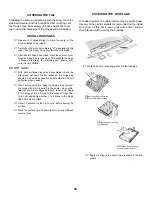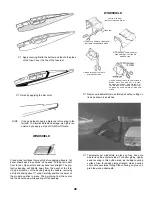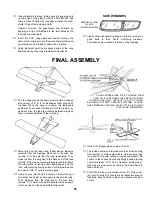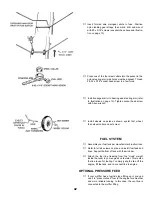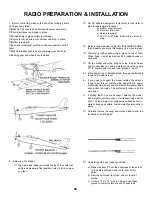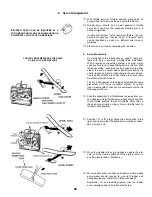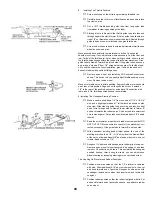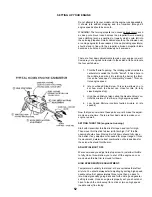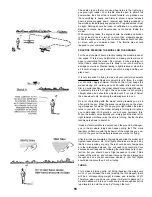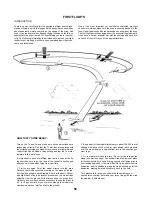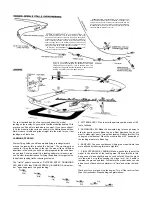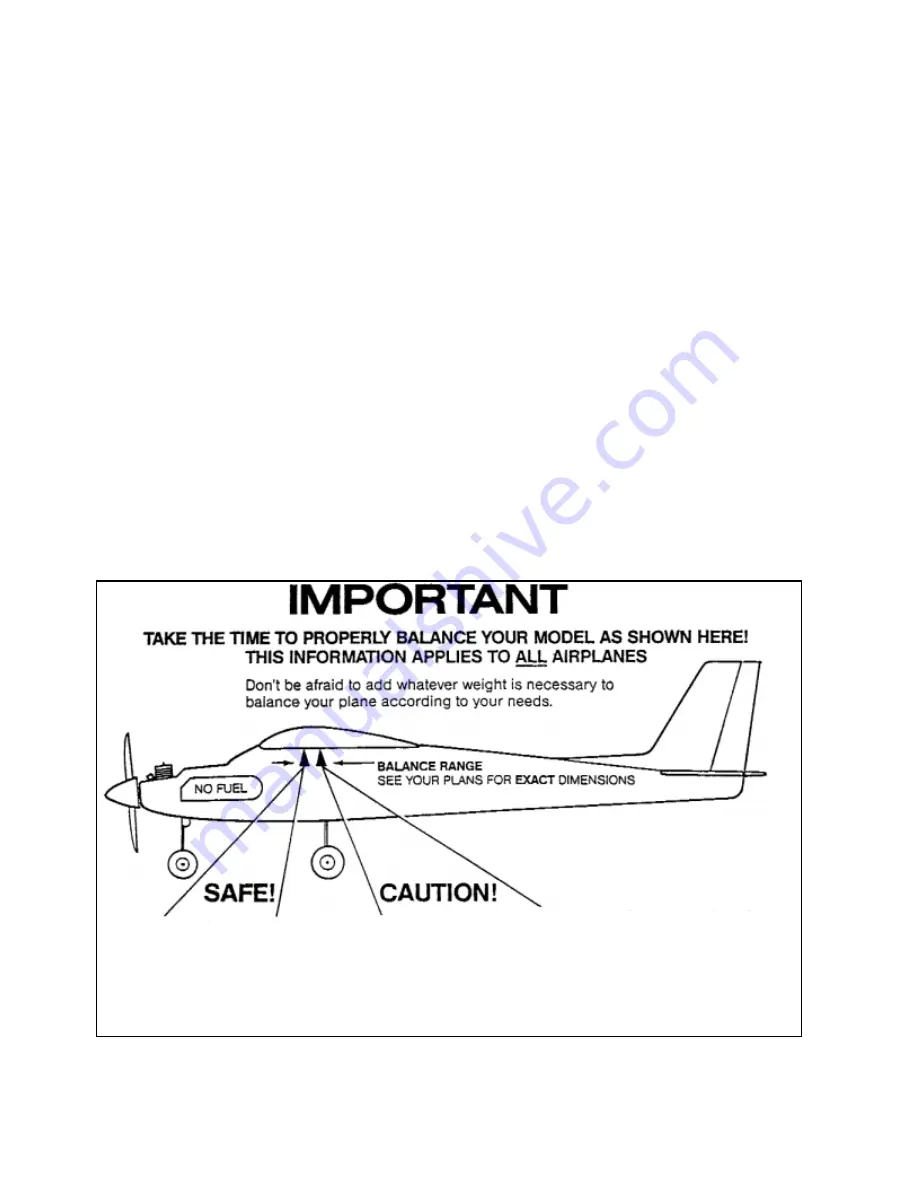
53
FIRST START ENGINE.
To start engine, first open 1/8 to 1/4 throttle. Prime with 4-6
drops of fuel in carb, attach glow plug and flip prop counter-
clockwise to start. Or use an electric starter that will spin the
prop.
WHEN ENGINE FIRES.
—If it speeds up and dies it is too lean. Turn high speed (needle
valve) 1/2 turn out (add more fuel).
—If it sputters, spitting raw fuel out the exhaust and dies—it's
too rich. Turn high speed needle valve 1/2 turn in (reduce fuel).
Continue to adjust until it will run continuously (it should run on
the rich side).
Hint: if you pinch the fuel supply line shut, the engine RPM
should increase slightly before it dies—this is the correct High
Speed Needle setting.
Now slowly open the throttle fully and again adjust needle valve
not to peak power but a bit less on the rich side. High speed is
set.
SLOW SPEED MIXTURE ADJUSTMENT
Now reduce engine throttle to idle speed. If it will idle, wait for
10 seconds and hit full throttle.
—If it speeds up very quick and dies-it's too lean.
—If it sputters, hesitates and dies-it is too rich.
Your final idle adjustment should be a bit on the lean side to
give the best transition. Once set it may never be adjusted
again.
If engine will not run at idle, open throttle up to 1/3rd and try to
determine if it's rich (sputtering) or lean (dies quickly) and adjust
slow speed screw. Then slow engine lower and re-adjust, if nec-
essary. A good sport 2-cycle should idle 2,500 RPM easily
Some engines will go to 2,000 but that's very low.
GENERAL. Do not fly your plane until engine is set up properly
As engine "breaks-in," both idle and power will improve. Bad
idle can be caused by dirt, bad fuel, or a bad glo-plug. Hint; if at
idle the engine dies when you remove battery power from plug,
it's probably too rich or a bad plug.
Use the most rearward balance point for those experienced in sport
and aerobatic flying. The model will be more responsive to elevator
control. As balance is moved rearward, more pilot skill will be required.
WARNING! If you try to fly a plane with the balance point further
behind the rear of the recommended range, you run the risk of having
an unstable aircraft and there will be a stranger likelihood of crashing.
Use the most forward balance point rec-
ommended for the first flights of any new
model, and for flight training. Balanced
here the model will be "easier" to fly.
Summary of Contents for Eagle 2
Page 28: ...27 ...

